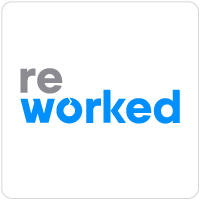The Undeniable Impact of Strong Company Culture Leadership
Building a high-performance culture helps to foster a happy workplace as well as better financial performance for your company. We’re not necessarily talking about creme brulee in the cafeteria or foosball tables in open areas. Rather, a high-performance culture is one in which every facet of the organization is aligned, compounding results over time.
A high-performance culture rarely just arises randomly. Instead, it is often the result of executives truly living the corporate values, and driving the direction of the culture through BOTH words and action. With a solid foundation, corporate values can shape everything from the way employees treat each other to the style of communication in the office to the company’s approach to hiring.
With this in mind, the following are key factors in how company leaders can shape a powerful corporate culture.
Why Leadership is Critical
Executive leaders set an example for the entire company, providing veritable guardrails for employee behavior. By default, leaders’ actions communicate to all levels of management and staff what is acceptable behavior and what crosses the line.
Leadership is critical to forging the right culture, as it is through the words and actions of leadership that alignment can be more easily achieved as to what the organization stands for, its decision making framework, how everyone interacts with one another, and how work gets done.
Values-Based Leadership
Leaders should demonstrate the right values, and then live those values every working day. Consider corporate leadership as a “beacon of truth,” and that beacon attracts others. The more positive and empowering the values of leaders, the more those values compound as they are reinforced through every layer of the company, every meeting, and every individual interaction.
Flexibility
According to the “Deloitte Global Human Capital Trends Survey, 2018,” employees value flexible scheduling and telecommuting options most among company perks. Forcing all employees to work 9-to-5 is an outdated concept, and runs counter to keeping teams productive and happy. In addition, many companies are now taking more innovative approaches to vacation time, with Netflix, Evernote, HubSpot and others offering unlimited vacation time.
As the Deloitte survey confirmed, it’s not only work time in which employees want flexibility, but also location. In today’s age, with many digital solutions available to facilitate seamless communication, there’s little reason to prevent staff from working remotely when needed.
Learning
Employees appreciate a company that invests in their success and their future, and that type of financial allocation comes from corporate leadership. There are many types of training that companies can provide to employees, including technology, soft skills, safety, management, and sales training.
Benefits of employee training include better employee performance, employee satisfaction, reduced employee turnover, keeping up-to-date with the latest technological advances, and stronger competitiveness, to name a few.
Invest in the Digital Workplace
Another way that company executives can communicate their commitment to a high-performance culture is to invest in the digital workplace, empowering employees to achieve more in less time.
The ROI of digital workplaces is substantial. Whether collaboration technologies, intranets, AI, machine learning, chatbots, team analytics, or other digital solutions, when leaders invest in the digital intelligence of the organization, they increase performance.
Performance Evaluation
If you want a high-performance culture, then the proper behavior and actions need to be rewarded and reinforced accordingly. After all, stating corporate ideals to workers but then evaluating them on a completely different set of criteria is confusing and dilutes efforts for a strong culture. Employee performance reviews should fit logically within the culture, guiding workers towards the workplace that leadership is trying to build.
Walking the Walk
It’s one thing to drone on and on about culture, behavior, and environment. It’s quite another to walk the walk and live your ideals. Business can sometimes present pressure-cooker situations, and the way that company leadership reacts in crisis mode is a reliable predictor of how people act when they think no one is looking.
When leaders guide the organization towards a healthy cultural direction, everyone benefits as employees become more engaged, and a more engaged workforce leads to a better performing business. If you’re looking to build a high-performance culture, look for leadership to take a proactive role in guiding and shaping corporate life in full alignment with the right values, and in empowering employees with flexibility, training, and a strong digital workplace infrastructure.

